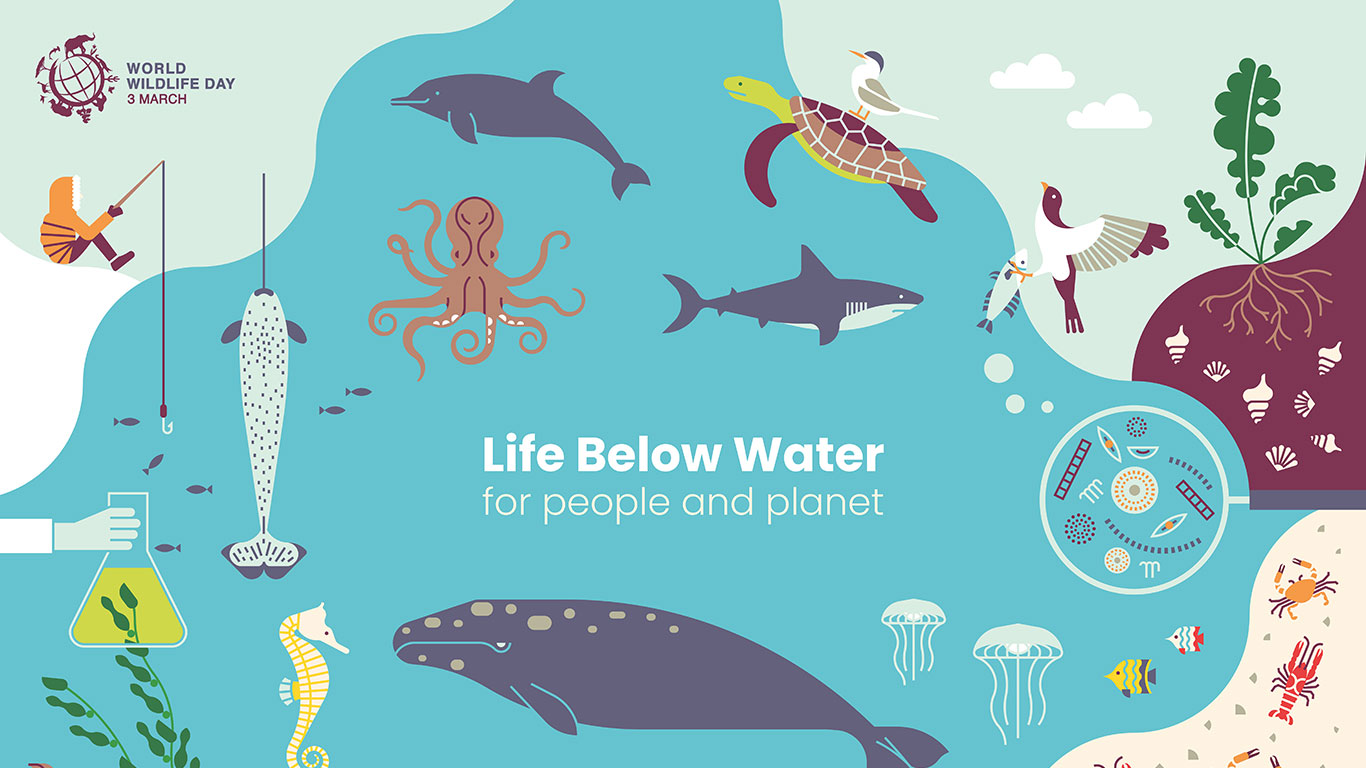
The United Nations General Assembly (UNGA) on 20 December 2013, proclaimed 3 March, the day of signature of the Convention on International Trade in Endangered Species of Wild Fauna and Flora (CITES), as UN World Wildlife Day to celebrate and raise awareness of the world’s wild animals and plants. World Wildlife Day has now become the most important global annual event dedicated to wildlife. World Wildlife Day this year celebrated under the theme “Life below water: for people and planet", which aligns with goal 14 of UN Sustainable Development Goals.
Over three billion people depend on marine and coastal biodiversity for their livelihoods. Marine wildlife has sustained human civilization and development for millennia, from providing food and nourishment, to material for handicraft and construction. It has also enriched our lives culturally, spiritually, and recreationally in different ways.
The capacity of life below water to provide these services is severely impacted, as our planet’s oceans and the species that live within it are under assault from an onslaught of threats. As much as 40% of the ocean is now heavily affected by the most significant and direct threat of over exploitation of marine species as well as other threats such as pollution, loss of coastal habitats and climate change. These threats have a strong impact on the lives and livelihoods of those who depend on marine ecosystem services, particularly women and men in coastal communities.
This was the first World Wildlife Day to focus on life below water and was a great opportunity to raise awareness about the breath-taking diversity of marine life, the crucial importance of marine species to human development, and how we can make sure it will continue to provide these services for future generations.
Hannah Wood from the Land & Life Foundation made a video during her visit to Elewana AfroChic Diani emphasising the importance of partnering with local communities to ensure the safety of our Marine species.
East Africa has a breathtaking coastline with the beautiful blue sea of the Indian Ocean lapping its sandy white beaches. The variety of creatures above and below the water line are abundant and we need to protect them and ensure that their environment is preserved so generations to come can continue to enjoy the pleasures of a coastal holiday but also for the communities that depend on this ecosystem for their livelihood.

